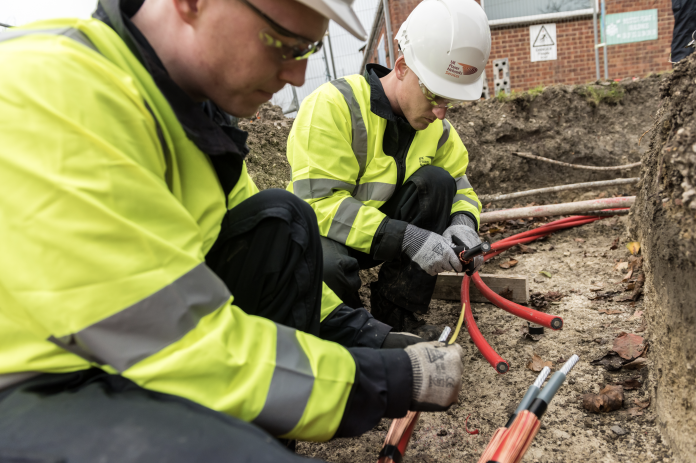Antony White, Sector Lead for UK Power Networks Services, discusses the challenges that data centres face meeting capacity requirements, ensuring a resilient energy supply and balancing sustainability pressures
As the UK’s data centre market continues to grow and mature, forecasters are predicting 36% revenue growth, and 29% power uplift in power demand by the end of 2025. While this may not be the growth of smaller European markets, the increase in the UK is still significant. The challenge for the UK’s electrical infrastructure is to meet the significant power demand of a data centre, while ensuring a truly resilient supply. Sustainability pressures add complexity for data centres, who should seek alternative energy from renewable sources and invest in new energy technologies including on site renewable generation and battery storage.
Meeting capacity requirements with a high-quality network connection
Data centres need to be connected to the local high-voltage electricity network – generally the 132kV network – which requires complex electrical infrastructure solutions combined with experienced asset management. In most cases, connections also need to be fed from at least two sources to maintain supply in the event of power interruptions on the local network.
Many of the UK’s data centres are located in the southeast of England, where there has historically been relatively easy access to high-voltage energy infrastructure from existing networks. Securing sufficient extra capacity from the local electricity network, to support the day-to-day running requirements and other energy-intensive requirements, such as air-conditioning and cooling, is a key factor in data centre location. Other important factors include having enough physical space and nearby connectivity to data networks and other utilities.
At UK Power Networks Services, we understand the requirements for these connections and the time and expertise needed to design and build them. Current supply chain headaches can result in long lead times for equipment, and detailed knowledge of the market, equipment required, and experience in high-voltage design and build connections projects is essential for any data centre project.
Projects also have to factor in order times for new equipment to be manufactured such as 132kV switchboards and transformers, after a detailed design is agreed. The challenge for new data centres is to understand exactly what equipment will be needed to fulfil the capacity requirements of the site, knowing the market and what is currently available, then engaging in procurement activities early to meet the project’s timeline.
Maintaining a resilient energy supply
Customers of data centres also need assurance that their connectivity will be available 24/7. There must never be the risk of speed issues or service interruptions, let alone a prolonged impact to service.
Maintaining a resilient energy supply is, therefore crucial. While ensuring an Uninterrupted Power Supply to a data centre can be achieved from multiple sources, contingency measures are an important part of any business’ plan in case a power cut ever happens. For example backup generators may be able to keep some operations running, however, the demand of a sizeable data centre is usually too great for this to be a viable option,f especially where sustainability and low carbon requirements prevent the use of diesel back up.
This is where our experience and expertise as an Independent Connections Provider is key. Data centres need a connections partner that understands the local electricity network, can design a fit-for-purpose connection, is experienced with high voltage engineering, understands the equipment required and has experience in equipment selection and knowledge of the market and what is available.
Resilience is not just down to high-quality equipment and expertise in design and build projects. Managing electrical assets is a specialist subject that works best with a long-term perspective. Data centres need to know when to replace equipment to optimise performance, what technological innovations to integrate, and how and when to dispose of obsolete equipment. The ongoing operations and maintenance and asset management of that equipment will be required to keep the electricity infrastructure operating effectively and continually in service.

Powering data centres sustainably
As electricity demand for data centres is very high, there is pressure to ensure they are powered as sustainably as possible. To satisfy local planning and social responsibility, the first step should be to ensure the power purchased is from green energy sources.
There are other ways data centres can increase their sustainability credentials while also reducing the impact of rising energy costs of sourcing all power supplies through the market. Renewable generation opportunities are available due to the large footprint that data centres occupy. These large areas may make solar PV viable – whether on the roof of buildings or in the surrounding land. Some sites may even have space for wind generation.
Other opportunities are emerging as technology advances, such as providing electric vehicle charging on site for staff and visitors or integrating battery storage into the local network. Battery storage could be used as an alternative to diesel backup generation and, as technology develops, may play a bigger part in managing the ever-increasing demand of the data centre.
Making your project a reality
When choosing a partner to power a data centre, considerations must include extensive high voltage experience, a track record of safety, equipment procurement experience, a full end-to-end solution encompassing design, build, operations and maintenance. UK Power Networks Services has this experience and can also provide capital finance options.

This work is licensed under Creative Commons Attribution-NonCommercial-NoDerivatives 4.0 International.











